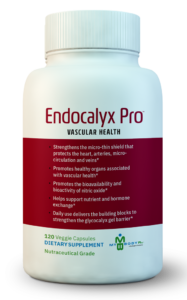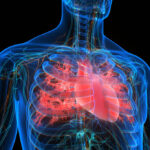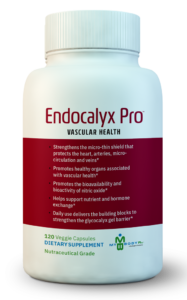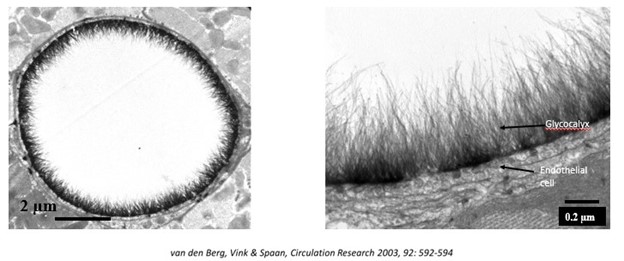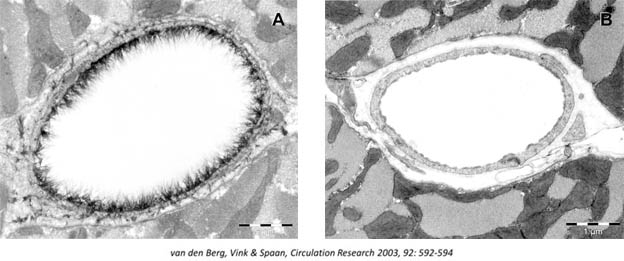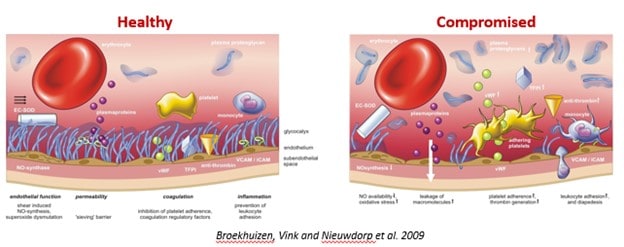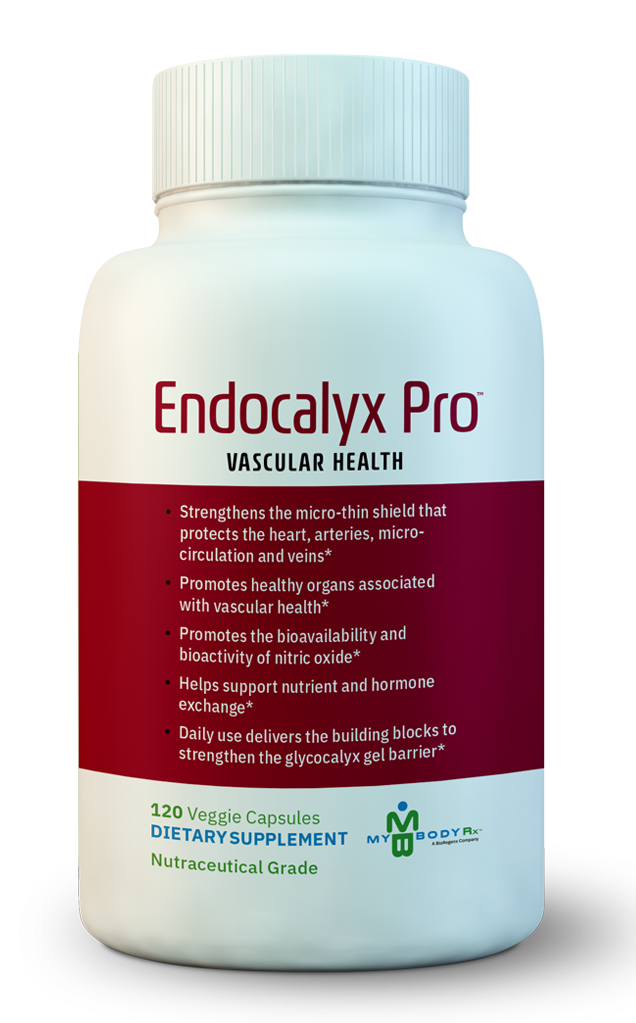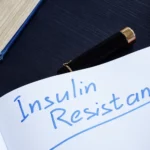Study: Improving Aortic Aging with Endocalyx Pro
A new paper has been announced by NuLife Sciences and Microvascular Health Solutions, subsidiaries of Bioregenx. The paper reports that Endocalyx Pro™ increased glycocalyx thickness and decreased aortic stiffness in a study conducted by researchers at the University of Utah and Florida State University. The study, titled “Glycocalyx-targeted therapy ameliorates age-related arterial dysfunction,” was published in GeroScience – Official Journal of the American Aging Association (AGE) and also included the use of GlycoCheck™, distributed exclusively by MVHS.
The researchers aimed to determine if changes in glycocalyx properties would affect arterial function in mice. They used tamoxifen-induced hyaluronan synthase 2 (Has2) reduction to decrease glycocalyx properties. Three weeks after tamoxifen treatment, glycocalyx thickness was lower in Has2 knockout mice compared to wild-type mice (P<0.05). Has2 reduction resulted in arterial dysfunction, as shown by impaired endothelium-dependent dilation (EDD) and increased aortic stiffness (P<0.05).
To improve glycocalyx properties, old mice were given 10 weeks of glycocalyx-targeted therapy with Endocalyx Pro™ (old+ECX), which contains HMW-HA and other glycocalyx components. Compared to old control mice, glycocalyx properties and EDD were improved and aortic stiffness was reduced in old+ECX mice (P<0.05). Old+ECX mice had a more youthful aortic phenotype, with lower collagen content and higher elastin content than old control mice (P<0.05).
“It is amazing to see that loss of vascular function that typically is associated with the long term effects of aging (such as stiffer larger arteries, thicker arterial walls, loss of capillaries, glycocalyx damage, reduced nitric oxide bioavailability and impaired vasodilation) can effectively be prevented by supplementing the diet with a natural therapeutic that is directed to protect and support the endothelial glycocalyx” said Dr. Hans Vink, Chief Science Officer of Microvascular Health Solutions. “Treatment of mice for only 10 weeks with Endocalyx, normalized both macrovascular function and microvascular properties compared with young mice, which indicated that the effects of old age on vascular health can be reversed in a relatively short period.”
The researchers wrote that “these findings suggest that the glycocalyx may be a viable therapeutic target to ameliorate age-related arterial dysfunction.”
Additional Endocalyx Studies Available
Several studies have been conducted on the use of Endocalyx Pro for improving microvascular health. These studies have focused on conditions and diseases such as COVID-19, stroke, diabetes, kidney disease, and aging. Additional research has been ongoing since 2015 on heart disease, sepsis, and psoriasis using cell cultures, animals, and humans. These studies can be found on Bioregenx.com for review.
Disclaimer Notice: The statements made in this article have not been evaluated by the Food and Drug Administration (FDA) or the Federal Trade Commission (FTC). This product is not intended to diagnose, treat, cure or prevent any disease. Consult your physician before using this or any other product.



